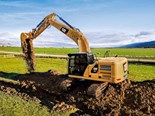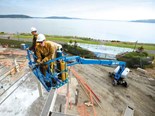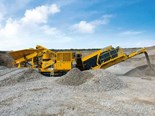Special commentary: Changes to Import Health Standard
DOW takes a look over the recent Import Health Standard, predicted to add costs to the importation of vehicles and machinery into NZ
Issued on 24 August 2018 under the Biosecurity Act 1993 by the Ministry of Primary Industries (MPI), the document replaces the Import Health Standard issued earlier on 9 August 2018 and addresses the importation of vehicles (cars included), machinery, and equipment, also covering tyres and cabling.
.jpg)
The Health Standard looks at bio-hazards such as the brown marmorated stink bug, which caused major issues with car shipments from Japan earlier in the year, and fruit flies, which is the second-most unwanted biosecurity threat due to its ability to decimate New Zealand’s lucrative horticulture industry, notably the pip and kiwifruit industries.
Importers from Japan
From 1 September 2018, importers from Japan must provide MPI with documentation that shows the new or used vehicle or piece of equipment has been cleaned and treated internally and externally to a required standard by an MPI approved Treatment Provider, using an MPI-approved eradication system.
On arrival in New Zealand, and within 12 hours of being unloaded from a vessel or sea container, the importer must arrange for an MPI inspector to inspect the goods, who may require the partial dismantling to confirm high-risk areas are free of bio-security contaminants.
If a bio-security issue is present, then the consignment must be re-shipped or destroyed, and any goods temporarily arriving for trans-shipment to other destinations are required to be contaminant- and pest-free.
With used machinery, MPI also recommends panels and plates are left off or loosely attached prior to export to avoid extra cost and delays at inspection time.
Used tyres
Used tyres come in for additional scrutiny requiring shippers to protect the previously treated cargo during transit or having them treated within 12 hours of arrival in New Zealand at a suitable transitional facility, although, this can be pushed out to 48 hours in certain circumstances.
Shipping between September and April
In addition, new and used vehicles and machinery that leave Japan after 1 September or arrives in New Zealand on or before 30 April of any year must also be treated for marmorated stink bug, which appears to be an extra treatment over and above the initial one MPI requires.
Fortunately, it seems pretty much anything on two wheels escapes the stink bug treatment, which also includes quad bikes and other similar vehicles.
Japan as a transitional port
New Zealand importers using Japan as a transitional destination are in luck as long as their goods are kept separate from all untreated cargo or are at a port for no longer than 120 hours. Any shipping delays could mean the requirement for chemical treatment.
Containerised freight
Wholly enclosed containers and the freight must be treated within 21 days of shipping to New Zealand, or upon arrival in the country, or at a transitional facility.
Schedule 3 countries
Currently, the new MPI-approved treatment requirements only affect vehicles and equipment from Japan, but from 1 December 2018, the Import Health Standard scope will widen to include Austria, Bulgaria, France, Georgia, Germany, Greece, Hungary, Italy, Liechtenstein, Romania, Russia, Serbia, Slovenia, Spain, Switzerland, and the US.
Summary
.jpg)
Measures to prevent damage to our primary markets must be protected and policed accordingly, so I’m a little surprised with the ‘waterblast and she’ll be right’ attitude of the past, especially when a lot of the imported equipment is used directly in the agricultural industry.
So, it appears pretty much most vehicles or pieces of equipment will come in for extra MPI scrutiny now, and this no doubt will see additional costs added to the end purchaser’s bill. However, it is critical this protection is carried out correctly and efficiently to protect our produce and export markets.
After speaking to a number of equipment and vehicle importers about the Import Health Standard, it appears the main issue seems to be confusion around the treatment of equipment and logistics associated with the process.
The main problem I see here is that MPI’s bio-security approved treatment measures require the use of MeBr, or methyl bromide to you and me. This chemical, if you don’t already know, is banned in some countries with others such as Japan committed to phasing it out, so it doesn’t take much computing power to work out there could be a degree of reluctance to increase the use of the chemical in Japan. Regarding treatment of goods in New Zealand, we currently use around 600 tonnes per year of methyl bromide.
Additional use of the chemical would see our tonnage significantly increase, and seeing how we are already using seven percent of the worldwide MeBr production, any escalation would have environmental factors to deal with and certainly goes against our cultural ethos.
Along with price increases, some of the importers I spoke to predict a delay in shipping with some saying it could create a backlog through into early 2019, although, once the system settles into place, things should return to normal. This I see as a best-case scenario.
The more astute can hopefully see there is a little more to the situation than just chemically treating our vehicles and machinery before loading them on a ship and sending them to New Zealand, especially if we decide to limit the use of MeBr here.
It could even mean an intermediate stop-off point for treatment if Japan decides not to play ball. My suggestion is to look more seriously at that machine or vehicle you have been pondering over.
Ed’s note: This article has been produced as an interpreted report of the Import Health Standard only. For the complete report as it affects you and your business, visit mpi.govt.nz.
Keep up to date in the industry by signing up to Deals on Wheels' free newsletter or liking us on Facebook.











